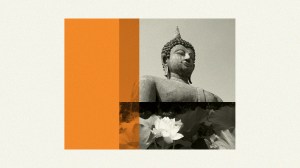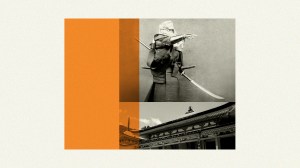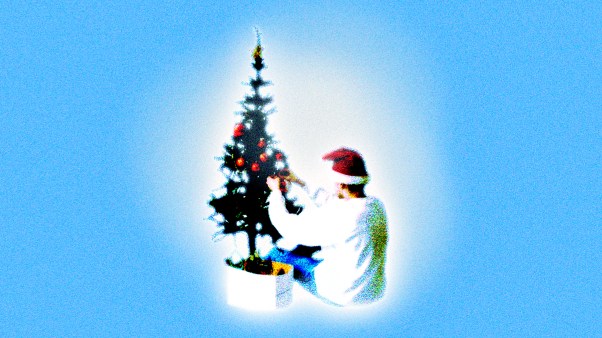In this series


(For the previous article in this series, see here.)
The one Buddhist word many people know is karma. Some say it means good things happen to good people and bad to bad. Payback. Destiny. What goes around comes around. Maybe, but in Buddhism everyone is reincarnated. We are born, we die, we recycle into another life, and whatever we do in this life won’t come around until the next.
Most Buddhists note that we almost never have consciousness of what happened in our previous lives. We have no guarantee of being reborn as human, they say, and we probably won’t be. While Buddhism has many strands, in its classic form people can be reborn into six realms: The top three are gods, demigods, and humans, and the bottom three are ghosts, animals, and creatures in hell.
The bad news is that most people have negative emotions that lead to negative actions that lead to negative karma that can result in rebirth as fish, dogs, or cockroaches. But if we are reborn as humans, what then? Recycling ends only when a person attains nirvana, the extinction of individuality and entrance into the cosmic all.
The cycle may take millions of lives. Individuals progress by dropping all worldly attachments and emphasizing extensive meditation, strenuous physical exercises, and other means of turning off our egos. Buddhism wins support on those grounds from people tired of being consumed by consumerism, but it’s important to note that many Buddhists condemn not only attachment to houses and cars but also attachment to others. The Buddha himself named his son Rahula, which means “obstacle.”
Two Buddhist parables illustrate the sweeping nature of the nonattachment principle. One concerns a man fleeing a tiger. He comes to the edge of a cliff, finds a vine, and climbs down it. When almost down, he discovers that a second tiger awaits him at the bottom while mice chew the vine above him. Instead of trying to concoct a means of escape, he notices a wild strawberry growing on the face of the cliff and eats it. Then the vine breaks, and the tiger gobbles up the man. End of story.
Non-Buddhists might see this tale as one of horror or might wonder why the man didn’t desperately try to distract the tiger by tossing the strawberry to him. But the primary point is that as strawberry is to man, so man is to tiger: We should not be attached to our own lives. Furthermore, we are all part of the whole, and if we think rightly, we will not fear death.
The second Buddhist story concerns a monk, Kātyāyana, who walked through a forest; saw a man, a woman, and a baby joyfully eating lunch; and burst out laughing at the deluded family values of the diners. Kātyāyana told his disciples, “They’re eating a fish that they caught from the lake. That fish was the grandfather in a former life. The dog who is now barking and begging for the fish was the grandmother. The baby the mother is holding to her breast was the husband’s enemy, a man he had killed for assaulting his wife.”
At the core of Buddhism is a sense that our attachments are foolish and that if we get rid of them, we will control our emotions and avoid creating additional suffering for ourselves in this life and future ones. We can beat attachment through meditation. For example, a Buddhist monk told one of the students in my Journalism and Religion class to defeat attachment to a girlfriend’s appearance by looking past her skin and visualizing veins, organs, bacteria, and so on. As one Thai cleric stated, “Lust should be balanced by contemplation of loathsomeness. … Examine the body as a corpse and see the process of decay.”
That animosity toward the body is frequent in parts of Buddhism that depict the body as merely bones, flesh, and fluids in a bag of skin. That view doesn’t note that we are fearfully and wonderfully made; it misses trees and emphasizes gloom about the forest. Some Buddhists oppose spending time to enjoy beauty, since they see matter as illusion. Their standard goal is to concentrate on individual enlightenment and to break out of the cycle of transmigration that Buddhists call samsara—endless wandering.
Some Buddhists say those attached to someone or something should reflect on the impermanence of whatever they love. If Buddhists admire a bell, they should remember all the things that could go wrong with it: It could lose its sound, crack, be dropped and broken. Nonattachment may demand a distancing even from love for ideas.
In practice, it’s important to keep in mind that Buddhism is sometimes based more on tradition than on philosophy. Christians tend to think of religions in terms of doctrine, but Buddhism in Southeast Asia and elsewhere is powerfully shaped by history and culture.
Still, some fundamental things apply as time goes by. In Christian understanding, God changes us. In Buddhist understanding, we change ourselves. Buddhism is full of tips on how to do that through breathing exercises and other means. Many would-be Buddhists find such techniques do not work, but Buddhist leaders often emphasize perseverance and a refusal to be agitated.















